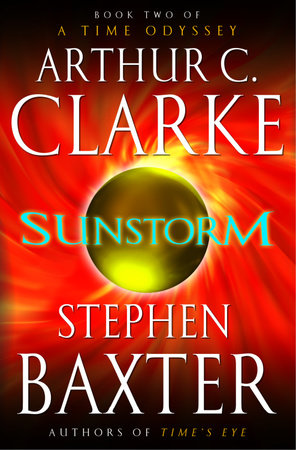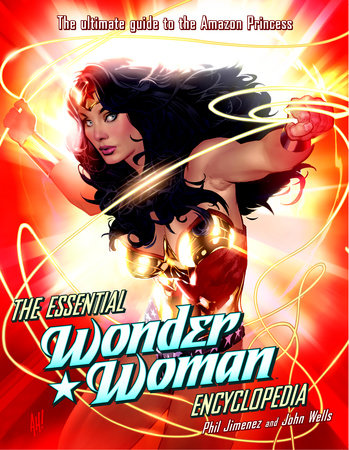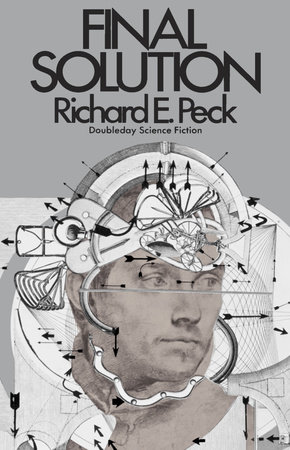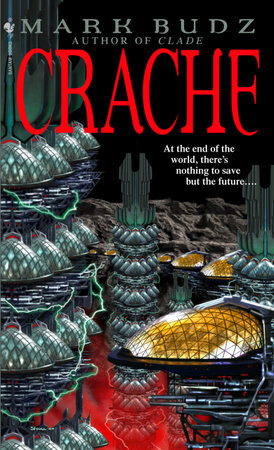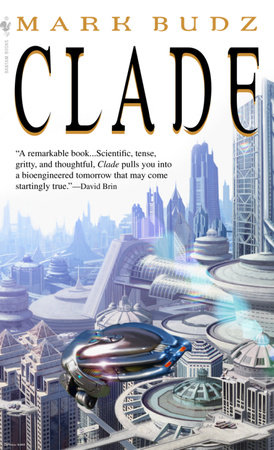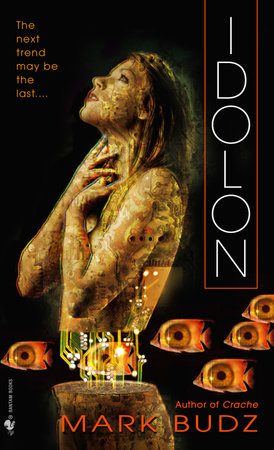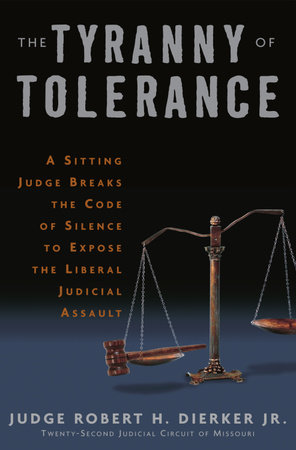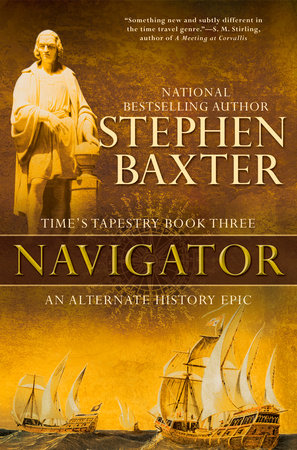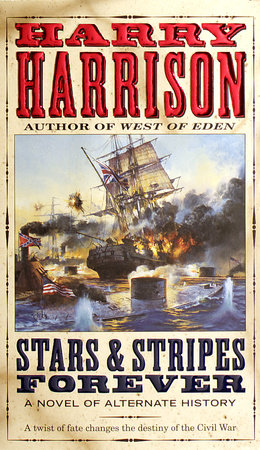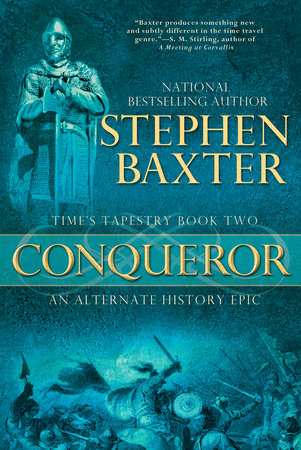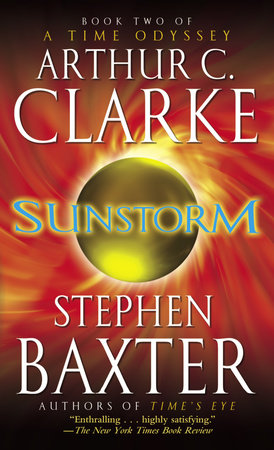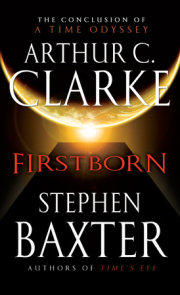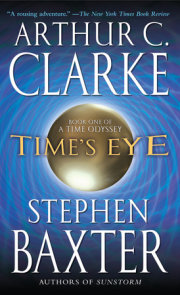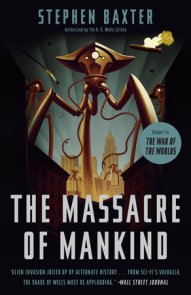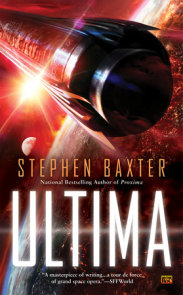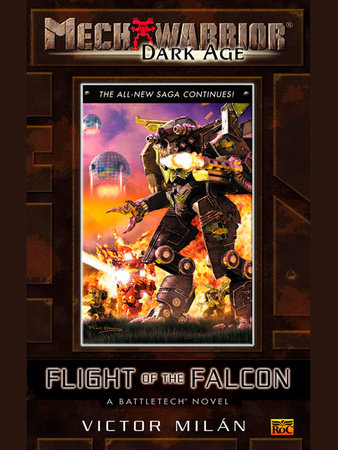Author Q&A
An interview with Stephen Baxter, co-author of SUNSTORM
Del Rey:Sri Lanka, the home of your co-author, Sir Arthur C. Clarke, suffered terrible losses in the recent tsunami. Have you been in touch with him since the disaster?
Stephen Baxter:Yes, he sent me a note the day afterward, which I have his permission to pass on in part:
“I am enormously relieved that my family and household have escaped the ravages of the sea that suddenly invaded most parts of coastal Sri Lanka, leaving a trail of destruction. But many others were not so fortunate. For hundreds of thousands of Sri Lankans and an unknown number of foreign tourists, the day after Christmas turned out to be a living nightmare reminiscent of The Day After Tomorrow . . .”
Further information on the tsunami and relief efforts is posted on the website of the Arthur C. Clarke Foundation, www.clarkefoundation.org.
DR:The scale of death and damage wreaked by the tsunami is difficult to comprehend, yet Sunstorm involves a disaster of many times the magnitude. What is the sunstorm of the novel’s title, and could it ever arise naturally?
SB:The sunstorm is an instability of the sun. Stars do suffer instabilities, ranging from flares all the way up to nova explosions. Our storm is somewhere in the middle. Yes, it could happen; stars like our own sun have been observed to suffer worse wobbles!
DR:The book really drives home the violence of solar processes. We’re kind of like the man who builds his house next door to an active volcano, aren’t we?
SB:But volcanoes have the most fertile soil. Besides, we really have no choice!
DR:If such a sunstorm did occur, how much warning would we get? And would it be survivable with our current technology?
SB:We’re getting better at predicting solar flares, but the sun’s weather is chaotic, like the Earth’s. We’re always going to be caught hopping. As for survivable–well, see the technological solution in Sunstorm.
DR:Sunstorm is the second installment in the Time Odyssey series, but it’s far from a traditional sequel. How does it fit in with Time’s Eye?
SB:Both books are about an intervention by aliens in human affairs. In Sunstorm they are trying to bring the human story to a close, for their own purposes. In Time’s Eye they are regretfully inspecting our history, just before they torch it. Of course we have other ideasÉ
DR:One question left unanswered at the end of Sunstorm is the fate of Mir, the “jigsaw” Earth where most of Time’s Eye took place. Is it destroyed? Does it continue to exist? In fact, there are so many tantalizing questions involving the alien Firstborn and the future of humanity that I wondered if you and Sir Arthur might not be planning a third book . . .
SB:Mir continues to exist “elsewhere”–another reality altogether. Yes, there are unanswered questions. We have contracted for these two books, but we have a story arc and outlines for more books in the future.
DR:In Time’s Eye, Bisesa Dutt was transported from Earth to Mir on June 7; Sunstorm begins on June 8, and the date set for the eponymous cataclysm is April 20. Is there any extratextual significance to these dates?
SB:Only that April 20, 2042 is a genuine solar-eclipse date.
DR:Sunstorm begins in the year 2037. It is a world very different from that of today, both in terms of technology (AIs, outposts on the Moon and Mars, nanotech, etc.) and prevalent social structures–political, religious, and so on. I realize your aim was not to predict the future, but are there specific extrapolations in the novel that you’d feel confident enough to bet on? A return to the Moon in 2015? A Mars landing in 2033? I suppose there are fewer random elements involved in purely technological extrapolation than in a religious phenomenon like the fictional Oikumene, for example . . . not that that’s any guarantee of greater accuracy.
SB:The space mission dates are based on President Bush’s new post-Columbia plan for a return to human exploration in space. That’s not to say the dates will be met, but they’re actually the current plan! I think in general the future in Sunstorm is optimistic; we will suffer climate change, but we hope that we will be able to overcome some of the differences that separate us right now–hence the Oikumenes, a movement aimed at finding common ground among the world’s great religions.
DR:Although Bisesa returns in Sunstorm, the novel seems to belong more to characters like Siobhan McGorran, the Astronomer Royal, and Miriam Grec, the prime minister of Eurasia. The prevalence of strong female characters in both Time Odyssey novels is striking.
SB:Perhaps only because you expect Strong Men in disaster stories! Actually, Strong Women make an honourable tradition in all forms of SF, from Alien’s Ripley all the way back even to Lt. Uhura from Star Trek.
DR:You mentioned climate change a moment ago. There is a vast difference between the official U.S. attitude toward this problem and that of the rest of the developed world. To what do you attribute this discrepancy?
SB:Maybe politicians act only when they have to! Perhaps it feels as if resource reserves and wealth will buffet the US for a while longer, so the pols don’t have to make hard choices, not yet. But climate change will bite us all.
DR:At one point in the novel, Miriam Grec expresses her belief that in coming together to solve crises like global warming and the threat of the sunstorm, the human race is maturing as a species. Do you agree?
SB:Yes. I’m actually very encouraged by efforts like the Kyoto Protocol. For all the imperfections of such efforts, we are making strong attempts to work together to get hold of the problem globally; a century ago we’d already have been fighting over the last oil reserves. A slight plug–in my next solo novel, Transcendent (Del Rey, December 2005), I have the US taking the lead in a serious attempt to address a climate crisis. I’m sure we’ll see that eventually; it has to come.
DR:I couldn’t help contrasting Aristotle, Thales, and Athena, the noble AIs of A Time Odyssey, with Hal from A Space Odyssey.
SB:Sympathetic (or unsympathetic!) AIs are an obvious legacy of the original odyssey. So yes, the global minds of Sunstorm and the phones of Time’s Eye are Hal’s remote cousins.
DR:Your 1997 novel, Titan, postulated that the Huygens probe would find life on Saturn’s moon. Hasn’t that possibility been pretty well scotched now that Huygens has landed? On the other hand, you couldn’t have been too disappointed by such a brilliant success for the European Space Agency.
SB:Life on Titan is still possible, even though it didn’t show up as directly as in the novel! I couldn’t possibly be disappointed in any way with what we saw of Titan. I feel privileged to have such wonders unfolding in my lifetime; when I was a kid, Titan was nothing but an orange dot in the sky.
DR:What are you working on now?
SB:A new series of alternate-history thrillers, to be called TIME’S TAPESTRY.
